x3250 M5: a new generation of the popular Intel server IBM

The transition to a new generation of IBM standard architecture servers began with the most affordable rack-mount model - from the x3250M4 server. The model is a sales hit in the line, which is not at all surprising given the price and confident coverage of all the typical needs of SMB companies. This is interesting: how have such needs changed and how much does the new server hit the target? Where improvements for the most part cosmetic, and where content?
The changes are obvious: storage
')
It can be said that some changes from the previous generation model are visible to the naked eye. The new x3250 M5 server has the same form factor, the height in a 1U rack, but the number of 2.5 ”hard drive bays has increased.
Here, there are 8 of them - that is, twice as many as in the IBM System x3250 M4 generation server and in the same class servers from competing manufacturers on the market today. In principle, a significant increase in the storage subsystem - and generally a higher installation density of resources in the most compact package - can be called a trend. Especially if we recall that at the same time with the new low-end server in October 2013, the x3650 M4 HD model was introduced - the previous generation, but the storage subsystem was increased dramatically, as well as the NeXtScale system, a High Density solution providing installation of 4 processors in 1U space standard server rack (two half width servers).
As for x3250 M5, as a result, the maximum capacity of 2.5 ”disks in 8 compartments reaches 8 TB (against 4.8 TB in the model of the previous generation). Even more capacity is provided with 3.5 ”discs.
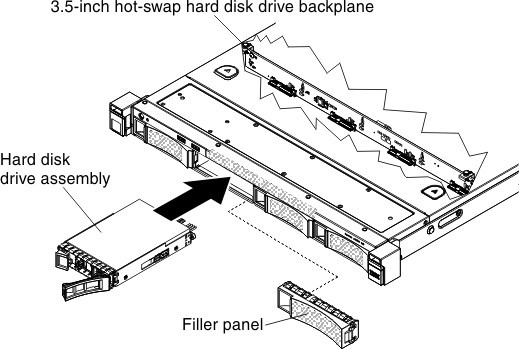
In the new model, there may be 4 of them, whereas in x3250 M4 there are 3.5 ”compartments only 2. The storage capacity available with 3.5” discs increased one and a half times from 8 TB to 12 TB. And this just reflects the current requests from the SMB clientele: more and more data, more and more demanding requirements for storage resources.
M5 vs M4: look inside
C that is visible, without opening a server cover, clearly. But the advantages of the new generation model are not limited to the storage subsystem; you need to look inside.
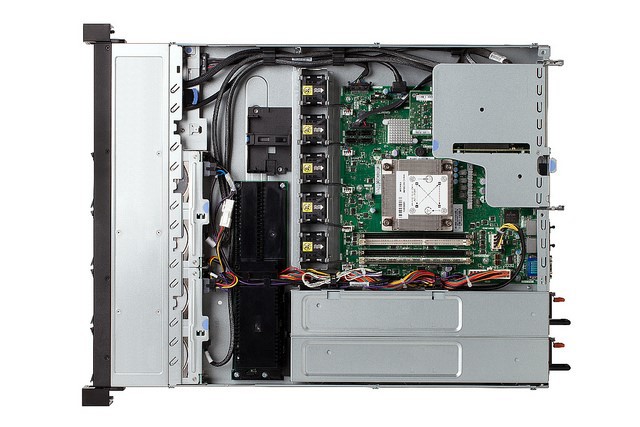
The advantages of the new model compared to its predecessor will help to see in the comparative table:

Already by the number of lines highlighted in color, it is clear that the changes are enough to talk about a full-fledged, not “marketing” change of generations. Moreover, some innovations are really interesting.
The processor is a new generation
Despite the importance of the storage subsystem, it's still not entirely correct to talk about changing generations of servers without a new processor. But the x3250 M5 server is just such a case. The Intel Xeon E3-1200 v2 with the Ivy Bridge architecture has been replaced by the next processor version - E3-1200 v3.
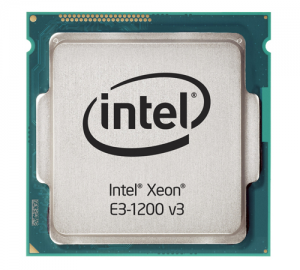
The Haswell processor architecture, on which Intel Xeon E3-1200 v3 is built, implies a change in the processor socket (LGA 1150 instead of LGA 1155). But the server does not limit the choice of processor, in the x3250 M5, both the Core-i3 4100/4300 series and the Pentium can be used as the CPU. In other words, x3250 M5, in contrast to the comparable competing servers of other vendors, offers a cheaper alternative to the top-end processor.
Energy efficiency
Data center equipment today simply has to be energy efficient, and the x3250 M5 server with the new E3-1200 v3 processors is an example of a successful solution of the problem. With E3-1200 v3 processors, according to Intel (SPECpower_ssj2008, April 2013), the performance gain per watt of energy consumed is 18%. The x3250 M5 server’s energy efficiency should immediately add 10% energy savings using a 1600 MHz DIMM memory of 1.35 V compared to 1.5 V memory used in the previous generation of the server. From the point of view of energy advantages, power units also make their contribution: one fixed ...
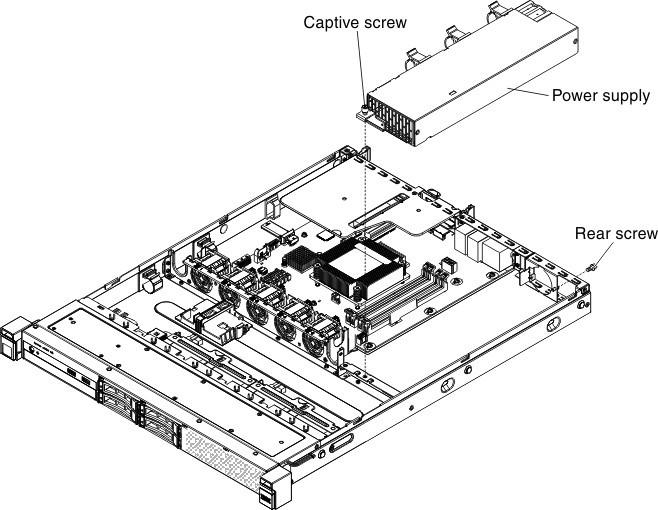
... or two hot-swappable
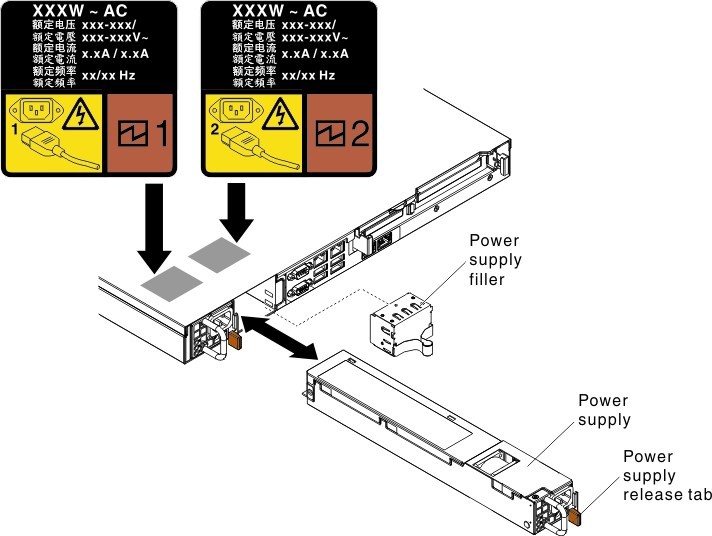
The power supplies used in the server comply with the 80 PLUS standard.
On demand
An important point - and this is not yet the case in similar solutions of competitors - the implementation already in entry-level servers of those techniques and technologies that until now were characteristic only of higher-end solutions. Specifically: FoD functions (Feature on Demand / Functions on request). In the “on demand” mode in the x3250 M5 server, you can activate 2 1 GbE ports without opening the server, without occupying a PCI slot and reducing downtime. In addition, in the FoD mode, RAID 5 and 2 PCIe x8 expansion slots are activated.
Total
Shift passed, change accepted. The potential of the new x3250 M5 server has increased significantly compared to the previous model. And while x3250 M5 is ahead of similar servers of competitors in a number of parameters. For the tasks of virtualization and building cloud environments, as a print and mail server or as the main server of an SMB company, this model will be a justified choice. And with the advent of the possibility of acquiring this model as part of the Express Seller program, this choice will be even more attractive.
Source: https://habr.com/ru/post/212157/
All Articles